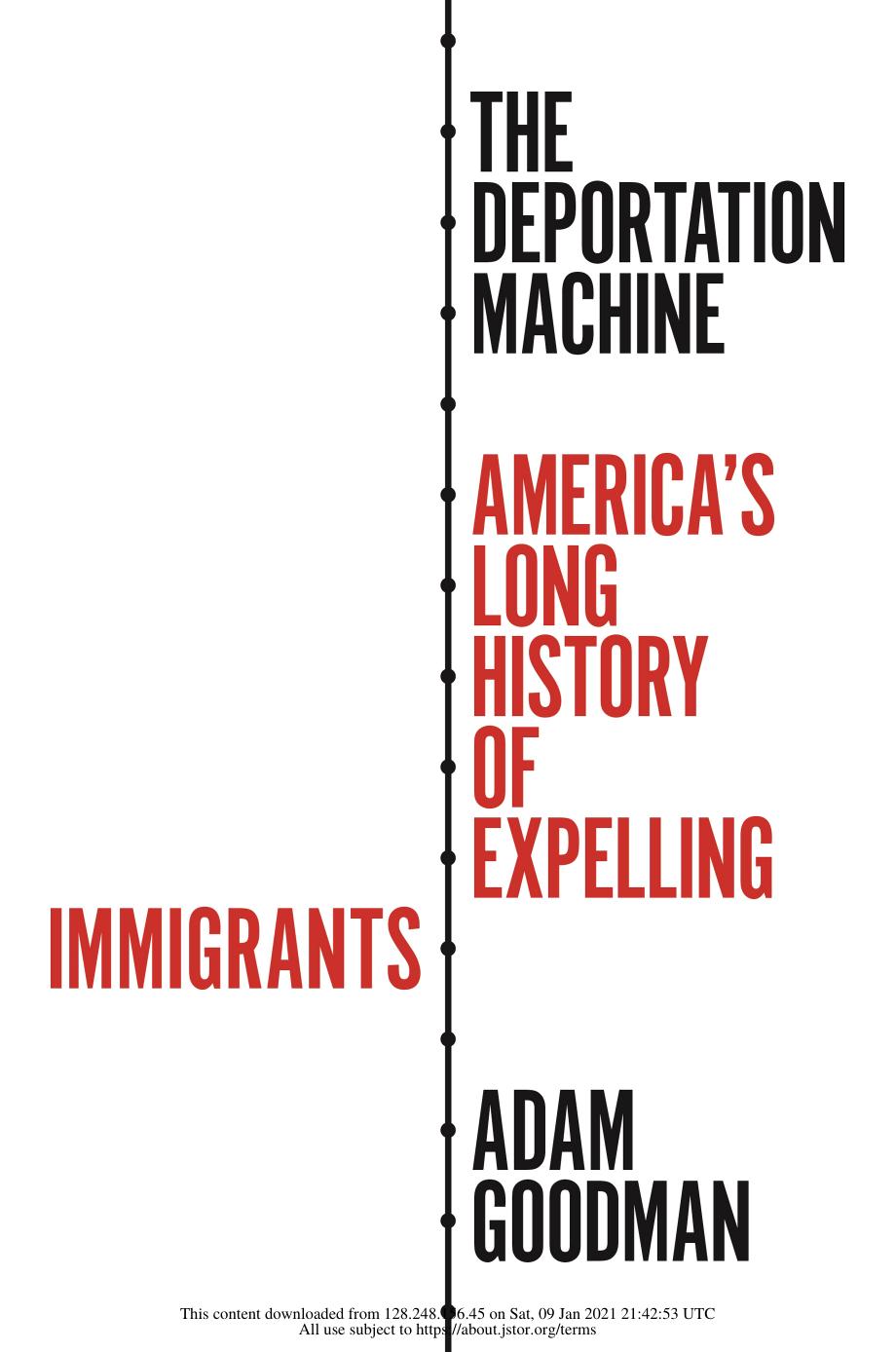The Deportation Machine: America's Long History of Expelling Immigrants by Adam Goodman

Author:Adam Goodman
Language: eng
Format: epub, pdf
Tags: politics, history
Publisher: Princeton University Press
Published: 2020-05-26T04:00:00+00:00
Rejecting Refugees and Externalizing Migration Control
While self-deportation campaigns were meant to make the lives of people already in the United States miserable in hopes of coercing them into leaving, officials also implemented tactics aimed at preventing immigrants from arriving in the first place. The externalization of migration control especially targeted individuals who came from countries other than Mexico and Canada. Though the practice’s roots go back to the nineteenth century, when transportation companies and later US officials stationed abroad began screening people before they left their countries of origin, it took on a new guise in the 1980s, when Central Americans started migrating in increasing numbers. The majority of Central Americans were refugees fleeing civil wars—funded by billions of dollars of US aid to right-wing governments in El Salvador and Guatemala—that left at least a quarter of a million people dead and three million more displaced throughout the region.46 Overwhelmed by ongoing mass migration from Mexico and the spike in Central American asylum applications, US officials started pressuring and paying Mexico to carry out its dirty work. According to Larry Richardson, the US Border Patrol chief in McAllen, Texas, at the time, “the United States ha[d] quietly been paying Mexicans to deport Central Americans to Guatemala” since 1981. The INS also “organized a spy ring in Mexico to assist in intercepting Central Americans headed for the United States” and to offer immigration enforcement training to Mexican officials. For at least three years in the early 1990s, the US Congress appropriated $350,000 a year to pay Mexico to deport transit migrants. In 2001, as part of Mexican President Vicente Fox’s “Plan Frontera Sur,” the United States offered its southern neighbor as much as $2 million per year to deport Central Americans to their home countries instead of just across the border to Guatemala.47
The Mexican government, to be sure, was not just a puppet for the United States. Mexican officials had their own reasons and motivations for cracking down on Central American refugees, including unemployment and general economic hardship in the wake of the 1982 debt crisis. As Bill Frelick, a senior policy analyst with the US Committee for Refugees, put it, in the years leading up to NAFTA, there existed “an unspoken, but clearly understood, quid pro quo: You stop these Central Americans, says the United States, and we will be sympathetic toward you on matters like trade barriers and debt.”48 This confluence of US and Mexican interests—clearly shaped by the United States’ pressure on its southern neighbor—altered the dynamics of immigration enforcement in consequential ways. As a representative of the Catholic Church observed, by the 1990s the border had “moved south. It [was] no longer between Mexico and the United States but between Guatemala and Mexico.”49
The United States’ outsourcing of deportation to Mexico was part of a larger strategy of preventing all refugees from reaching US soil, effectively denying people their human right to seek asylum. In 1981, the same year that the Reagan administration started paying Mexico to crack
Download
The Deportation Machine: America's Long History of Expelling Immigrants by Adam Goodman.pdf
This site does not store any files on its server. We only index and link to content provided by other sites. Please contact the content providers to delete copyright contents if any and email us, we'll remove relevant links or contents immediately.
The Secret History by Donna Tartt(16618)
The Social Justice Warrior Handbook by Lisa De Pasquale(11489)
Thirteen Reasons Why by Jay Asher(7786)
This Is How You Lose Her by Junot Diaz(5767)
Weapons of Math Destruction by Cathy O'Neil(5034)
Zero to One by Peter Thiel(4823)
The Myth of the Strong Leader by Archie Brown(4789)
Promise Me, Dad by Joe Biden(4444)
Stone's Rules by Roger Stone(4415)
Beartown by Fredrik Backman(4413)
How Democracies Die by Steven Levitsky & Daniel Ziblatt(4396)
The Fire Next Time by James Baldwin(4341)
100 Deadly Skills by Clint Emerson(4075)
A Higher Loyalty: Truth, Lies, and Leadership by James Comey(4031)
Rise and Kill First by Ronen Bergman(4012)
The David Icke Guide to the Global Conspiracy (and how to end it) by David Icke(3880)
The Farm by Tom Rob Smith(3871)
Secrecy World by Jake Bernstein(3782)
The Doomsday Machine by Daniel Ellsberg(3730)
